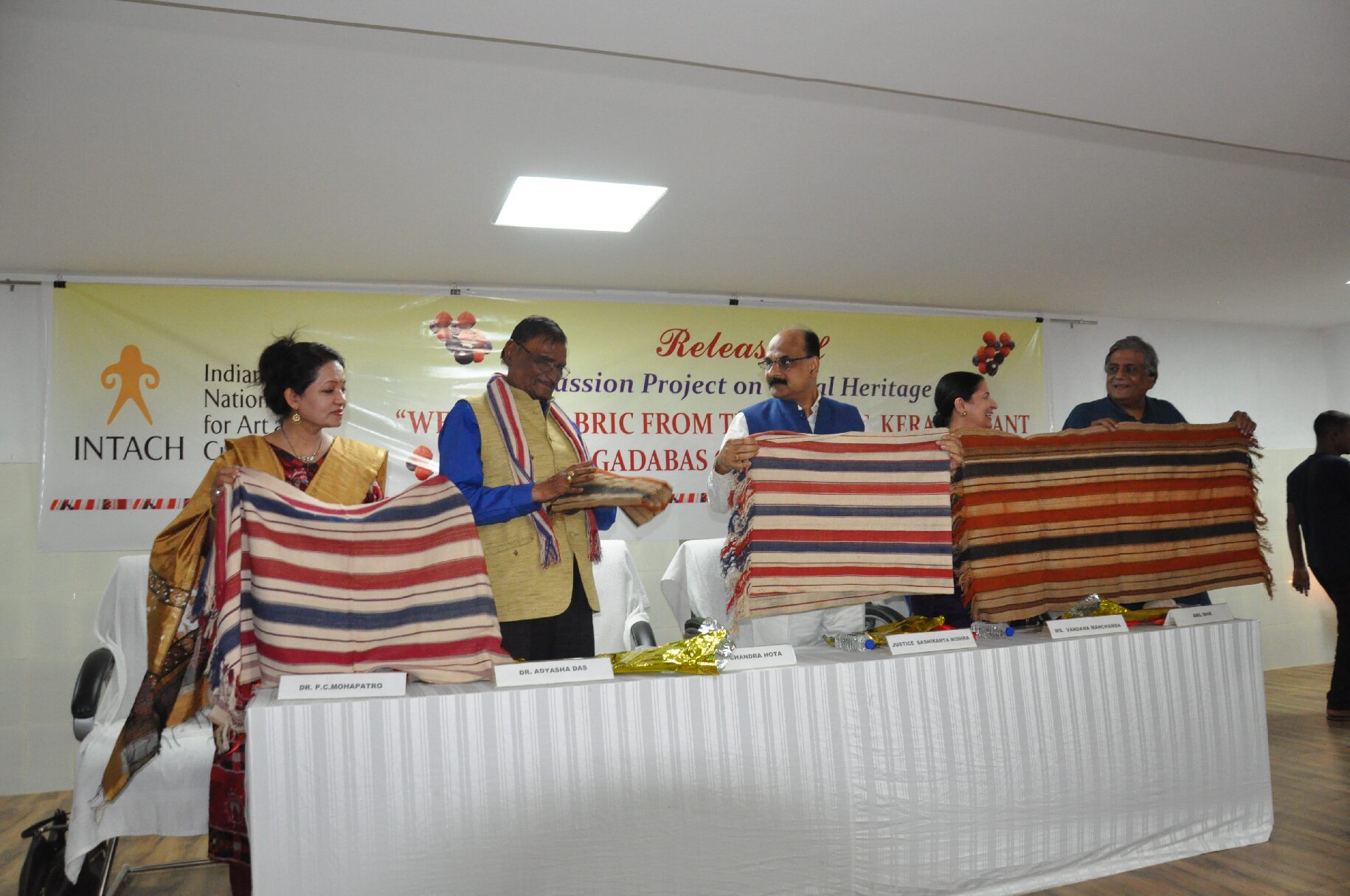Commodity Exchange at Bhubaneswar would enable global buyers a ready and convenient access to the exportable items from the industries based in India. The Exchange would help evolve price indexes that are based more on the Indian industrial costing factors rather than that of external spot commodity exchanges like those of London, Shanghai, New York and Chicago etc. Such a spot national mineral and metal commodity exchange would help organize the ongoing trading and physical export of minerals like iron ore, chrome and manganese ores etc. in a more transparent and organized manner.
India’s march to economic prosperity with a targeted double digit GDP growth rate would necessitate making available adequate quantities ofmetals and minerals to the primary and upstream industries. The growth of Iron and Steel, Ferro Alloys, Aluminium and other base metal and mineral industries are going to be the key contributors.These industries consume large quantities of input material in the form of ores, carbon, refractory and other process mineral. No nation in the world is self-sufficient on all kinds of input of mineral resources to support such large metallurgical operations and have to rely on sourcing the same through a global supply chain system. India’s case is no different. While India with its rich Iron ore, bauxite, chromites, steam coal and other raw material is very advantageously positioned to set up and operate global size metallurgical projects, it faces acute shortage of certain critical inputs like metallurgical grade coking coal, lime stone, petroleum coke, base metalores and concentrates etc. which would need to be procured from overseas sources for all times to come.
India has rich deposits of steam coal to support large scale generation of electricity, another critical input needed to sustain its industrial and economic march. However, with environment and emission standards increasingly becoming stringent, the need for ‘sweetening’ of Indian high ash steam coal with low ash imported coal/coke would increasingly become critical in times to come.
Conservation of national mineral resources and changing process needs (e.g import of low alumina iron ore for DRP steel making) would emerge as additional issues necessitatingsourcingseveral minerals from overseas.
India has a poor resources base interms of minerals needed to produce critical non – ferrous metals like copper, zinc, nickel, chromium etc. Therefore to set up global size production units, India would have to perennially depend on import of corresponding ores or its concentrates from global sources.
It is well known that an efficient supply chain, comprising of economic sourcing, efficient logistic support, convenient transit warehousing and an efficient inventory management systems are very critical for sustenance and economic operation of large tonnage mineral and metal production units. A country based spot/physical commodity exchange providesan advantage of easier and economic global sourcing on country specific quality standards and price indexing.It also provides a convenient and economically attractive bulk shipping, warehousing and trading platform for global suppliers in meeting the growing needs of a market like that of India.
The establishment of production facilities of global scale of economy and with internationalfunding generally necessitates earmarking capacities for sale in international market to meet the critical demand of servicing of overseas commercial debts. A country based commodity exchange would enable global buyers a ready and convenient access to the exportable items from such India based industries. The Exchange would help evolve price indexes that are based more on the Indian industrial costing factors rather than that of external spot commodity exchanges like those of London, Shanghai, New York and Chicago etc.
In addition, such a spot national mineral and metal commodity exchange would help organize the ongoing trading and physical export of minerals like iron ore, chrome and manganese ores etc. in a more transparent and organized manner.
An India specific import – export commodity index for metals and mineral would be a significant contributor to making the supply chain for Indian metallurgical and energy industries more efficient and economical.This would, in turn, help such industries in the country to become bettercost effective and competitive on global terms.
TheBenefit Chain
It is an established fact that the first beneficiaries of a national physical/spot trading commodity exchange are the direct material user and processing industries. It also benefits the global suppliers in terms of greater accessibility to a larger segment of the user market and plans their deliveries better for taking the best advantage of the fluctuating global shipping rates.Such exchanges have existed world over since 18th century in the present economically developed parts of the world. They have contributed immensely to the growth of national and regional economies and generate large scale quality employment in shipping, ware housing, internal logistics, banking and financing sectors. Of late, they have been contributing immensely to the growth of local IT, industrial and civic support systems. The tax on exchange specific services generates valuable revenue for local and national Governments. In recent times, the physical commodity exchanges set up in China and Korea have contributed to a great extent in making their industrial product and capital goods industries gain distinctivecompetitive edge in pricing and market positioning in the global markets.
Operational Philosophy for an India Metal – Mineral Spot Exchange
The current and project production capacities of major Metal Mineral and energy industries and their critical input needs are as follows:
| Sl.
No. |
Industry | Capacity
Mln/TPA |
Major imported inputs
(Mln/TPA- Apox) |
Remark | |||
|
2011 |
Projected 2020 | Input Material | Current 2011 | Projected 2020 | MOUs in force: StateNos.Tonnage
Odisha49 75.66 Jharkhand65 104.00Chattisgarh7456.61 WB 12 21.00Others 22 18.00 Total222 275.70 |
||
| 1 | Iron & Steel | 102 | 377 | Metallurgical Coke | 55 | 180 | |
| Lime Stone | 30 | 100 | |||||
| Low Alumina Iron Ore | Nil | 10 | |||||
| 2 | Aluminium | 1.52 | 10.00 + | CP Coke | 0.3-0.45 | 25-30 | There are various other imports. |
| CT Pitch | .045 | .45 | |||||
| 3 | Thermal Power generation | 0.65 X78KMW =50,700 | 2030 demand =9,50,000 MW (Total)- Thermal – X0.55 = 5,25,000 MW | Low ash Coal/Coke | Apox.15 mln TPA | Apox. 155 to 175 Mln TPA | Share of captive imports increasing |
(Source: GOI ministry 2010 annual reports)
[The above figures are indicative of the trend]
The demand figures for a period beyond 2020 at even current growth rates could grow at a much rapid rate on the basis of the large base figures built up by 2020.
While adequate infrastructure capacity, most important of that being ports, warehousing and internal logistic capacities etc., are essentials for achieving such levels of growth at national levels, a physical spot commodity exchange would work as a performance multiplier for each of these elements of the industrial commodity supply chain.
The users of industrial commodities- metals and minerals in particular, generally organize their procurements on four platforms:
- Captive source supplies
- Long term contracts
- Medium term contracts
- Spot purchases
Each platform has its specific significance, advantages and disadvantages in terms of security of supplies, costing and pricing, ware housing and inventory carrying costs, quality assurance, documentation and transparency of operation. Spot purchases offer highest security of supply, lowest inventory cost, moderate on quality assurance and – in general, lower pricing advantage. The component of procurement under spot purchases against overall procurement quantities, generally varies for a mineral and metal based industrybetween 20-40%. Similar is the pattern of positioning with respect to exports and sales to overseas buyers. The existence of a national commodity exchange on the country’s shoresenables both domestic and global buyers and sellers to come on to a common platform that operates on indexes that are integrated to the interests of local economy and priorities of the domestic industry and promotes higher volumes on buying and selling on spot trading basis..
4.0: Location Justification:
With the advent of internet and information boom, there is a general perception that for trading, a location is immaterial as long as the site is accessible to the buyers and sellerson a reliable communication network. However, a spot commodity exchange offers the following additional operational advantages that a virtual and speculation based exchange does not provide:
- Physical accessibility to material being transacted
- Efficiency of a well-organizedwarehousing system
- Quality assurance andcertification.
- Transparent financial management
- Trade data bank and information dissipation system
In India, nearly 75% of the iron and steel, aluminium and other metallurgical and thermal power generating capacities are located on the Eastern Coast of India covering the states of Odisha, Chhattisgarh, Jharkhand,Bihar and Andhra Pradesh, as also are the mineral reserves and mining capacities for iron ore, Bauxite, Coal etc. Along with the existing and proposed mega mineral, metal and thermal power projects new capacities over next couple of decades are also most likely to be set up in these states only. It is also to be noted that the mineral rich Bihar, Chhattisgarh and Jharkhand states are all land locked and the mega power and metallurgical industries located therein would have to depend on port facilities of Odisha and Andhra Pradesh for the bulk overseas procurement of their criticalprocess material.
The east coast of India from Gagaveram in Andhra Pradesh to Dhamra in Odisha offers the deepest coast line and is also currently in the midst of setting up of new port capacities. With development of world class bulk commodity ware-housing facilities in the vicinity of the upcoming ports on the east coast and integrating them to a Commodity exchange platform would be an ideal arrangement for servicing the needs of the mineral and metal industry of India in general and those located in the above mentioned 5 eastern states, in particular. With majority of production facilities located in the eastern part of the country development of the proposed exchange in any other region would tend to eventually overload the existing and extended internal logistic system.
Above all, a physical commodity exchange activity in Eastern India would promote industrialization of the region and act as a locomotive to socio-economic growth of this otherwise least developed region of the country.
The city of Bhubaneswar in Odisha offers an excellent choice for location of the exchange in terms of its location on the national mainstream rail, road and sea linkages. It is an evolving cityand hasspace available for setting up of new and state of the art operational facilities. In addition, the emergence of Bhubaneswar as a favoured IT hub and major educational center of the country, would offer an advantage of availability and access to better educated and trained manpower in adequate numbers.
The way forward:
A regional, national and industry consensus needs to be arrived at on the necessity, objectivity and urgency of setting up of an India Mineral and Metal Commodity Exchange on the East coast of India.An administrative SPV to be created to carry forward concretization of the following either in-house or through engagement of a reputed global consultant:
- Finalize a statement of concept, objectives, goals for the project
- Establish techno-economic viability of the scheme.
- Develop a business, financial and revenue model for the project.
- Create a model for organization and operational practices.
- Prepare a statement of infrastructure and support systems needed to be developed over a short, medium and long term horizon for implementation and operation of the project.
A look at the emerging and developed economies of China, Korea and SEA counties along with the trading scenario in developed economic powers regions like North America, Europe, Japan and Australasia, confirms the utility of a national physical/spot Mineral and Metal Commodity Exchange for the growth of primary industrial commodity industries. Such exchanges have been operated effectively all over the world for decades. With Indian mineral and metal industries now entering a stage of geometric growth rate, it would be crucial and also prudent for the industry, Government and infra-structure industry take a serious look at an option for setting up an Indian Mineral Metal Physical/Spot Commodity Exchange to meet the emerging needs of sustaining the growth trend in the Indian economy.









































